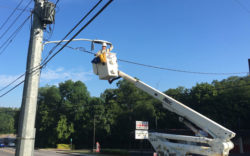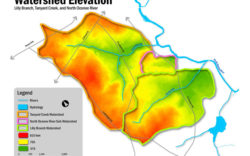If you’ve been waiting for the right opportunity to hop on the solar bandwagon, you’d better get ready to jump. The Solarize Athens program is the best chance at affordable solar electric systems that Athens-area residential and commercial customers will get for a while. Though the perennially at-risk federal residential and commercial solar tax credits have been extended through 2019, the sunset for the Solarize Athens program is Mar. 31.
Solarize Athens is a joint effort among Environment Georgia, Solar CrowdSource, the Georgia Climate Change Coalition and Georgia Interfaith Power & Light. The Athens-Clarke County Unified Government has also joined as a community partner. Alternative Energy Southeast (AES) was selected through a competitive bid process to serve as the installer for this program, and they have subcontracted with Turnsol Energy of Watkinsville to conduct at least 25 percent of the installations. If successful, this would be the second project of its kind in Georgia, the first being on Tybee Island where 320 kilowatts were installed, which Solarize Athens plans to exceed.
The program is open to residents, businesses, government and nonprofit entities within the metro Athens Area as defined by the regional transportation group MACORTS (Clarke and parts of Oconee and Madison counties). However, Solarize Athens says that potential customers outside of this area will be evaluated on a case-by-case basis, and “the more requests within a specific area interested in participating, the more likely we can bring them into the campaign.”
The program takes advantage of volume pricing by recruiting a large group of customers to install solar on their homes and businesses all at once, using the same products and contractors. System costs are discussed in terms of dollars per installed watt of peak system power, including panels, electronics, hardware and labor. According to Solarize Athens, Tier I (0-50 kW) residential solar pricing is $3.19 per installed watt installed before incentives and credits, but they hope to gather enough partners to get into at least Tier V (201-250 kW) to bring that price down to $2.94. Most residential systems are in the five–10 kW range, so group pricing adds up to considerable cost savings. Commercial systems, which are simpler and faster to install, are expected to get as low as $1.96 per installed watt.
As opposed to a power purchase agreement or other third-party financing scheme (see the Sept. 2 Greensplainer), once in place, these systems will belong to the property owners themselves. Financing will be available through Admirals Bank, which offers loan programs designed specifically for solar installation (including 18 months interest-free to allow time to collect your tax credits).
People who apply at solarizeathens.com, call 706-389-9602 or sign up in person at a local workshop will be asked to provide some information about their property and 12 months of electric bills. AES will then submit a preliminary report that includes a site plan based on satellite imagery of the property, an analysis of system requirements based on the electric bills and a financial analysis over a 25-year period. The next step is a site visit where AES will discuss budget, financing and system details. If the participant wants to continue, then AES will evaluate the roof and electrical system and perform a shade analysis to refine the numbers.
All of the installed systems will be grid-connected with a bi-directional meter, unless the participant already managed to get into Georgia Power’s now-closed Advanced Solar Initiative.
Georgia Power says of the bi-directional meter connection, “When the solar panel is producing electricity, the energy is consumed on site at the home or business, and the customer buys less from the utility at their tariff rate. When the output of the solar panel is more than the energy demand in the home or business, the excess energy flows to the grid and is credited at [the utility’s] avoided cost.” In other words, at times when production is less than or equal to demand, the value of the solar energy is the customer’s avoided cost, about 12 cents per kilowatt-hour. If you over-generate, the utility pays you for the surplus at their avoided cost rate, about 4 cents per kilowatt-hour; thus the importance of right-sizing the system.
Solarize Athens expects the residential payback to be seven–10 years depending on individual rates and rebates (e.g. Jackson EMC will cut a check for $450 per installed kW). Commercial systems should pay off in four–seven years as they “get the benefit of bonus depreciation and accelerated depreciation, which can have a dramatic effect on payback times if the customer is able to monetize these tax incentives within the first couple years after installation.”
The next Solarize Athens information session will be Thursday, Jan. 21 at the Oconee County Library. It will include “Solar 101” at 6:30 p.m. and a financing workshop at 7:30 p.m. There will also be an event for interested commercial participants on Feb. 4 from 5:30–8 p.m. at the Terrapin brewery.
Like what you just read? Support Flagpole by making a donation today. Every dollar you give helps fund our ongoing mission to provide Athens with quality, independent journalism.










